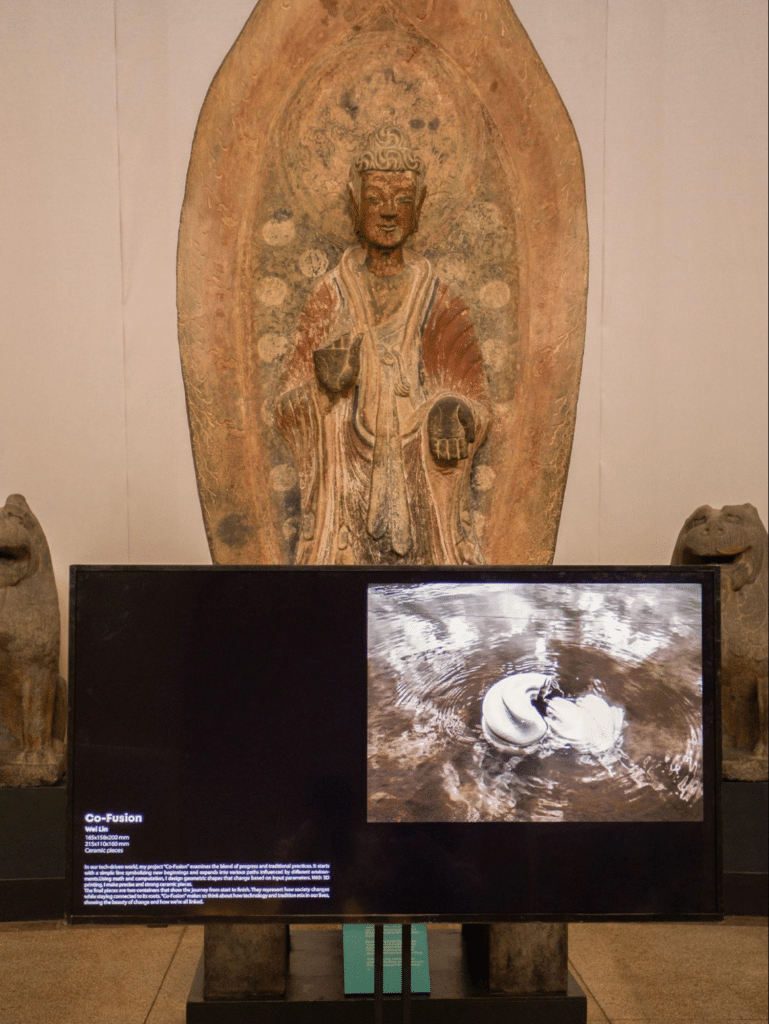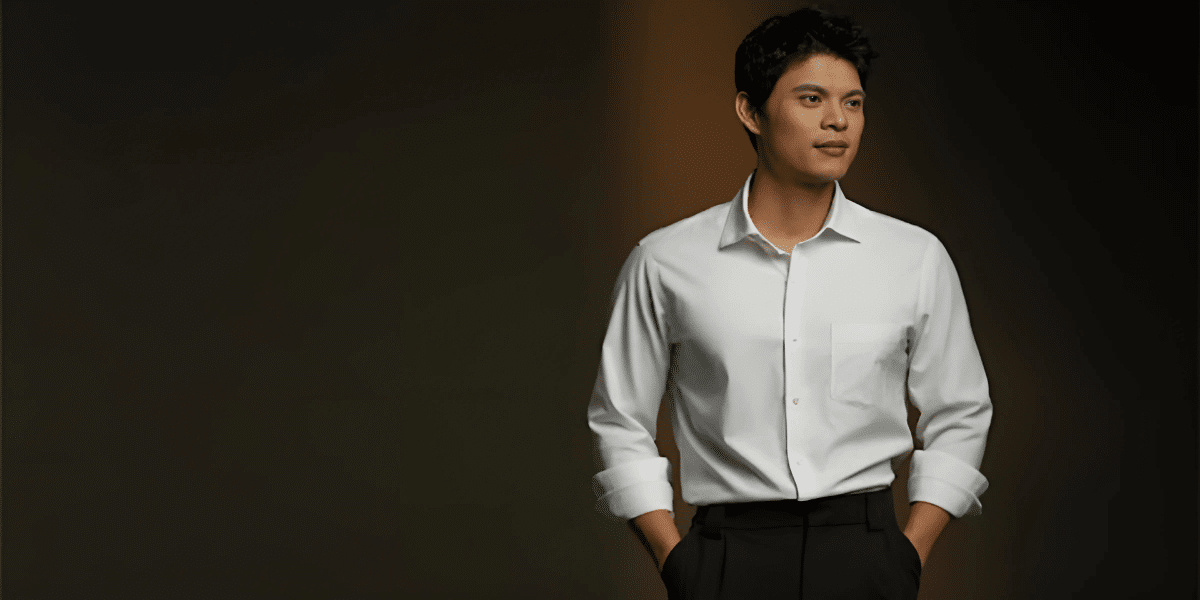By: Elena Mart
Philadelphia, PA – The exhibition “On the Critical Point: Wanderlust and Nostalgia in the New Age” opened at the University of Pennsylvania Museum of Archaeology and Anthropology (Penn Museum).
The exhibition, a collaborative effort between New York-based VSDesign, DesignPhiladelphia, and ALT Alliance, seeks to evoke contemplation and connection, blending humanistic traditions with an increasingly post-human world. Opened in November this year, this innovative showcase will feature works by internationally renowned contemporary Cross-disciplinary Designer Wei Lin alongside other distinguished artists, such as Sheryl Oring, Chenlin Cai, and Tong Wang.
Wei Lin, an innovative designer who bridges technology and art, is expected to play a central role in the exhibition. He will bring his unique perspective on the tension between technological advancement and the fading of traditional practices.

The exhibition will feature two series of his works: “Empirical Growth” and “Co-Fusion.” Both series are created using ceramic 3D printing with inorganic bonding materials and artificial sand.
The overarching theme of “wanderlust and nostalgia” reflects the artist’s profound desire for self-development through exploration, juxtaposing elements of traditional Eastern culture with the complexities of a diverse, modern society. This journey often evokes powerful memories of the past. In a world increasingly influenced by artificial intelligence, the artist confronts the tension between technological advancement and traditional practices. His work seamlessly blends traditional Chinese philosophy with broader contemporary dialogues.
“Co-Fusion” particularly embodies this exploration, capturing the essence of fusion and synthesis. It begins with a single primitive line, symbolizing the infinite potential of new beginnings. From this singular point, paths diverge, shaped by both physical and intangible environments. The resulting pieces, two evolving containers (165x158x200 mm and 215x110x160 mm), trace a visual narrative from origin to form. These works represent a fusion of static existence and dynamic emergence, serving as metaphors for society’s continuous evolution.
“Empirical Growth” contrasts this notion by illustrating the transition from singularity to plurality, highlighting the journey from simplicity to complexity and the interconnectedness of identity and environment. The ceramic set comprises a plate (127x127x17 mm), a bowl (100x100x58 mm), a cup (100x100x58 mm), and a vase (150x150x270 mm), each reflecting diverse manifestations of identity stemming from a singular origin. These pieces emphasize the self-exploration inherent within the multiplicity of identities represented by various “containers.”

The artist’s manifesto advocates for the integration of art and technology within a mathematical and rational framework. He uses computational design methods to decode natural phenomena and manipulate simulations in a controlled environment. Digital fabrication serves as an extension of his creativity, enabling the translation of abstract ideas into precise physical forms. He harnesses 3D printing technology to achieve remarkable dimensional accuracy and structural integrity.
His practice is poised to blur the boundaries between various art forms as technology continues to advance. Driven by the spirit of scientific inquiry, he pursues cross-disciplinary explorations, significantly expanding the spectrum of art. His work promotes a richer visual presentation and perception for both artists and audiences. He remains optimistic about the rise of digital art and the transformative impact of technologies such as 3D printing and artificial intelligence in artistic mediums.
Given his impressive credentials, his participation is particularly significant. He currently serves as a scientific illustrator and independent designer in collaboration with the University of Glasgow. Additionally, he teaches at the Intelligent Building Construction College at Yango University in Fuzhou, China.
Throughout his illustrious career, Wei Lin has received numerous prestigious accolades. Notably, his achievements include earning the East Creative Award in Shanghai—a prestigious recognition for innovative contributions. He was named a finalist in the 2024 National Ceramic Creative Design Competition by the China Ceramics Industry Association, acknowledging his significant contributions to ceramic design. In 2024, he also received 3rd Place and the Outstanding Tutor Award in the 10th National University BIM Graduation Design Innovation Competition in China, highlighting his leadership and teamwork skills.
His artistic practice, which explores and innovatively expresses Ceramics through 3D printing, has earned recognition. His works are collected by numerous prestigious institutions internationally, including the Yangtze River Delta Cultural Expo in Shanghai, China, and the Interior Design Show in Vancouver, Canada.
Aiming to integrate the arts and technology within the medical field, Wei Lin’s contributions to scientific illustration have been recognized at several academic events. Notably, he collaborated with Hong Lin to create a schematic diagram for cardiovascular research, which was presented at the 29th Annual Conference of the Chinese Life Scientists Society (UK) held at the John Radcliffe Hospital, University of Oxford, and exhibited at the BHF Glasgow Cardiovascular Research Centre, School of Cardiovascular & Metabolic Health, University of Glasgow. Additionally, in September 2024, he developed a research poster and delivered a virtual presentation for the 25th anniversary of the discovery of the CML leukemic stem cell at the Paul O’Gorman Leukaemia Research Centre.
Wei Lin’s architecture and ceramic design explorations have gained significant attention in international publications. His work has been featured in the Winter Issue of Collect Art Magazine (2024) and in “Visual Communication for Architects and Designers” (2020), showcasing his unique aesthetic and cross-disciplinary expressions.
The Penn Museum’s rich history, dating back to 1887, provides a fitting backdrop for this exploration of time and culture. Spanning over 300,000 square feet and welcoming more than 180,000 visitors annually, the museum’s expansive galleries will offer a unique context for his works.
As the art world continues to grapple with questions of identity, tradition, and progress, this exhibition at the Penn Museum serves as a crucial platform for exploration and understanding. With his innovative practice at the forefront, “Empirical Growth” and “Co-Fusion” aim to be a thought-provoking journey through the landscapes of artistic innovation.
Published by Charlie N.

















